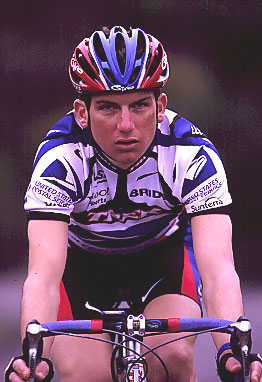Sign up to Get FREE Steroids, SARMS, Peptides eBooks
[sc:masthead-std]
[sc:salutation-std]
Professional Cyclists, Runners, and Skiers are Blood Doping! Here's why they do it, and how they do it.
Many professional athletes have taken to the practice of blood doping in order to gain a competitive edge in their field. But there are those who are crying that doing so can have serious consequences not only to the sports world, but to one’s body as well.
 The term blood doping is one that has been thrown around a lot in the past few months, especially with all of the accusations being hurled at many top-notch athletes recently. The 2006 Winter Olympic Games saw police raiding the living quarters of athletes in hopes of finding dopers. American cyclist Lance Armstrong has faced numerous allegations of suspected blood doping ever since his seventh Tour de France win in 2005. And going back even further, tons of other cyclists, distance runners, and skiers have been put under the microscope after being accused of blood doping.
The term blood doping is one that has been thrown around a lot in the past few months, especially with all of the accusations being hurled at many top-notch athletes recently. The 2006 Winter Olympic Games saw police raiding the living quarters of athletes in hopes of finding dopers. American cyclist Lance Armstrong has faced numerous allegations of suspected blood doping ever since his seventh Tour de France win in 2005. And going back even further, tons of other cyclists, distance runners, and skiers have been put under the microscope after being accused of blood doping.
Much like suspected steroid users, possible blood dopers are on the fast track to becoming the next breed of hunted athletes. And the reason that these athletes are being stalked by sports governing bodies such as the International Olympic Committee, U.S. Anti-Doping Agency, and World Anti-Doping Agency is they believe blood dopers have a serious edge on the competition.
The process of blood doping, also called blood boosting or blood packing, involves illicitly increasing the number of red blood cells throughout one’s body. Since red blood cells carry oxygen from the lungs to the muscles, an increased amount of RBC’s can give a person more stamina. This is why blood doping has become a favorite practice of some elite endurance athletes due to the fact that it gives them improved aerobic capacity.
There are a couple of different methods that these people can choose from when blood doping. The first and most traditional way involves transfusing red blood cells directly into one’s body. This can be done by way of an autoglogous transfusion or a homoglogous transfusion.
In an autoglogous transfusion, an athlete will have blood removed from their own body several weeks before a big competition. A centrifuge (a device that uses centrifugal force to separate a fluid from another fluid or solid) is used to separate the red blood cells and they are put into cold storage for a later date. When the athlete’s big event comes around, the red blood cells are then transfused back into his body.
A homoglogous transfusion involves an athlete receiving red blood cells from another person. The donor will go through the same process of having their RBC’s removed and harvested until they’re needed by the athlete. So this brings to mind the question “Why in the world would someone choose to have another person’s red blood cells put into their body over their own?”
The answer is simply a matter of training. In an autoglogous transfusion, an athlete is left with decreased energy since they’ve just lost a significant amount of blood and it will take their body some time to recover. Therefore, they can’t train as effectively as before whereas a homoglogous transfusion allows them to keep training at high level because they don’t have to sacrifice their own blood.
But while those who use homoglogous transfusions may be able to train harder before their competition, they run the risk of contracting several threatening diseases. Some of these blood born diseases include AIDS, hepatitis, and malaria. Autoglogous transfusions aren’t without their share of problems either as a person can get septicemia (bacteria in the blood), phlebitis (inflammation of the veins) and hyperviscosity syndrome (increase in the viscosity of the blood which can lead to heart strain and even failure).
Fears stemming from the possibility of contracting diseases through blood transfusions have left many athletes running to another method of blood doping: using drugs such as the infamous EPO. Occurring naturally within the body, EPO (erythroproietin) acts as a growth agent to stimulate the production of red blood cells. Over the years, scientists have discovered that EPO can be manufactured by using recombinant DNA technology. It was originally done so that the drug could be used as a treatment for people suffering from anemia or kidney diseases. That is until the late 1980’s, when it is believed that Grand Tour cyclists caught word of EPO’s proposed benefits and then starting using the drug to improve performance.
Ever since the beginnings its suspected use by elite cyclists, the sport of cycling has been rocked by EPO scandal after scandal. Evidence of EPO use has been fueled by the fact that many professional cyclists have died in their sleep. Experts say that EPO can lead to thickened blood, which can clot more easily. During sleep, a person’s heart rate is at its lowest and clotted blood can strain the heart and possibly lead to death. This so-called evidence has led to EPO being considered just as unsafe as blood transfusions and reason enough for the mass testing for blood doping that has occurred throughout the world.
Early methods of testing involved measuring a person’s hematocrit, or percentage of blood volume that’s taken up by red blood cells. Normal numbers for a male range from about 44% to 47% and women are usually around 35% to 38%. This means that a person with a hematocrit of 43%, for example, would have 43 milliliters of red blood cells for every 100 milliliters of blood.
So any athlete who turns up a hematocrit of 50 or above is often considered a blood doper and faces a ban from their sport for a certain length of time. But the problem with hematocrit testing lay in the fact that it can’t differentiate between an athlete who has a high RBC percentage because of blood doping versus an athlete who has used alternative methods to attain a high hematocrit.
One example of alternative methods to achieving a high hematocrit is high altitude training. Training at high altitudes is frequently employed by cross-country skiers whose sport revolves around training in the mountains. Kenyan distance runners are another example, as they often train in the mountains and, in turn, increase their red blood cell count.
Another method to getting red blood cell counts up is a process called the sleep chamber. Invented by a University of Colorado professor named Igor Gamov, the chamber allows endurance athletes to train while they sleep. Dubbed “The High Altitude Bed”, this chamber simulates the reduced air pressure that is seen at high altitudes and increases the rate of red blood cell production. Although this sounds like something out of a bad science fiction movie, the chamber is actually legal and considered to be safe.
With the potential problem that hematocrit tests present in implicating those who may be innocent of blood doping as guilty, sports governing bodies have turned to other methods of testing athletes. Those who’ve used EPO are probably the easiest to catch and a cheap $60 blood test can determine if a person’s red blood cell count is high enough to where a $400 urine test needs to be administered. A simple urine test can tell whether or not an athlete has synthetic EPO in their system, which is different from the natural EPO in our bodies.
Although Lance Armstrong has constantly been accused of doping with EPO, he hasn’t ever had any official tests come back positive despite claims to the contrary by some European journalists. Kenyan-born distance runner Bernard Lagat and Belgian triathelete Rutger Beke are a couple of international athletes who’ve tested positive for EPO use but later had their names cleared. Elite Spanish cyclist Roberto Heras Hernandez was convicted of using EPO and has been unable to clear his name.
The ease of catching those who use EPO has caused many athletes to switch back to blood transfusions. In reaction to this, sports governing bodies have scrambled to find more accurate tests to nab these types of blood dopers. Catching Homoglogous transfusers has become somewhat easier because recent advances in testing.
The new testing procedures can determine the difference between blood from an athlete and blood from a foreign source by examining minor blood proteins. It goes beyond the simple ABO types of blood and takes a look at the minor blood groups, or proteins. 50,000 to 60,000 blood cells are looked at in this test and fluorescent markers are attached to each group of cells. If some of the cells within a group glow and some don’t, then you have a doper.
 American cyclists Tyler Hamilton tested positive for having foreign blood in his system during the 2004 Summer Olympics but was allowed to keep the gold medal he earned there due to inconclusive tests on his second sample. However, he received a two year ban from the sport of cycling after he tested positive for blood doping in another race called the Vuelta a Espana. One of his teammates, Santiago Perez, was found guilty of the same offense at the race.
American cyclists Tyler Hamilton tested positive for having foreign blood in his system during the 2004 Summer Olympics but was allowed to keep the gold medal he earned there due to inconclusive tests on his second sample. However, he received a two year ban from the sport of cycling after he tested positive for blood doping in another race called the Vuelta a Espana. One of his teammates, Santiago Perez, was found guilty of the same offense at the race.
While anti-doping officials are able to effectively test people who’ve used homoglogous transfers like Hamilton and Perez, as well as EPO users, there are currently no tests that can specifically determine who’s been doing autoglogous blood transfusions. However, the World Anti-Doping Agency (WADA) has vowed to find a way to test for this type of blood doping. The question is why though.
Yes, blood transfusions and EPO can put athletes at serious health risk (especially for those who don’t take safety precautions). But just as with rampant steroid use in other professional sports, athletes claim they’re just blood doping in order to keep up with the competition. It is estimated that over half of professional cyclists and cross country skiers have used some form of blood doping at one point in their career.
And do fans really care who’s blood doping or do they just enjoy seeing athletes accomplish superhuman feats and smashing old records. These are the types of things that make sports interesting and, contrary to what the WADA and the IOC think, watching someone just slightly better than an average Joe just doesn’t cut it.
More importantly, do fans around the world really want a portion of their tax money going to paying a bunch of high profile organizations to run around and test hundreds of athletes just to catch one who they consider to be cheating? I know that I certainly don’t!
[sc:signoff-std]





